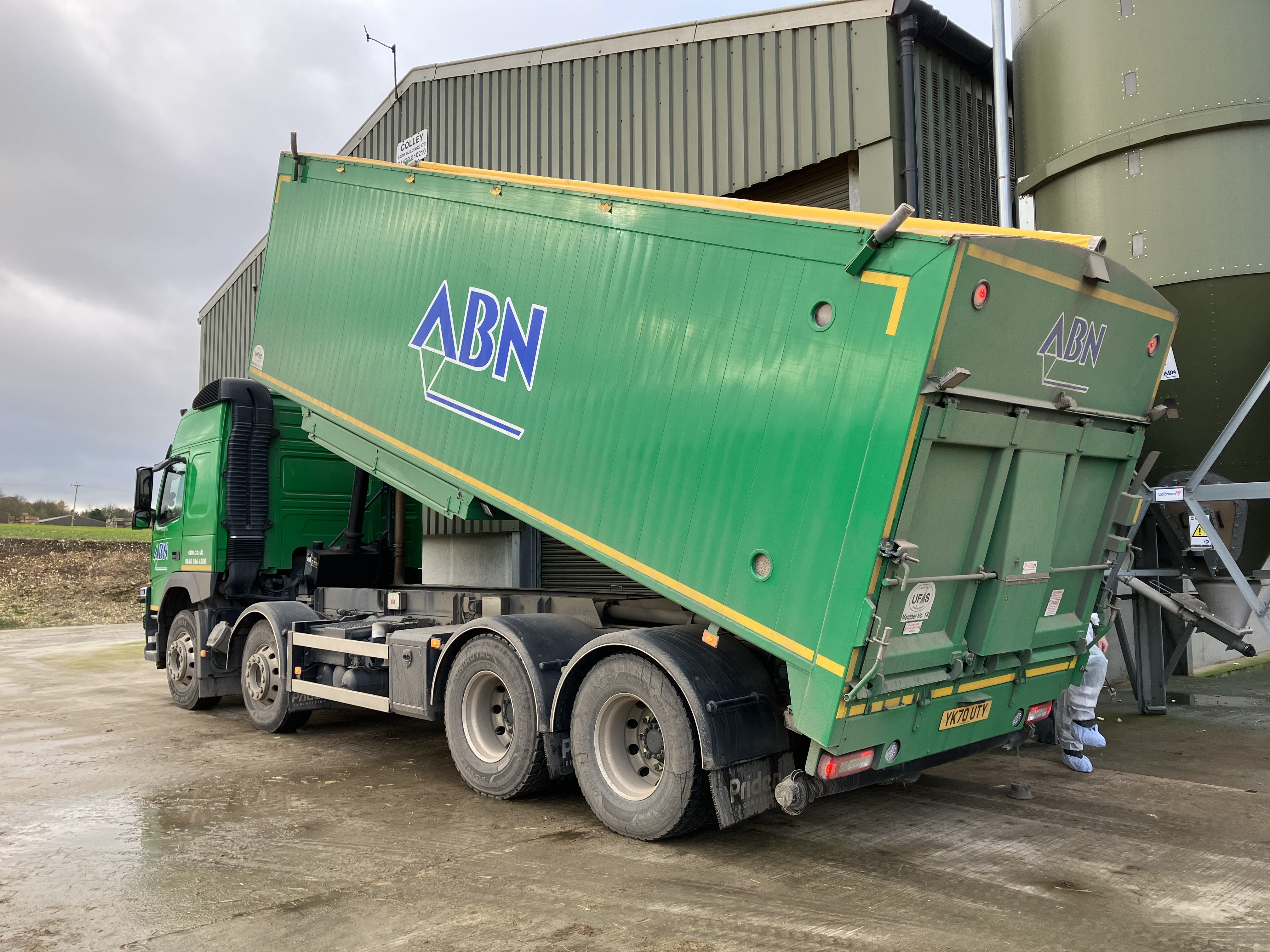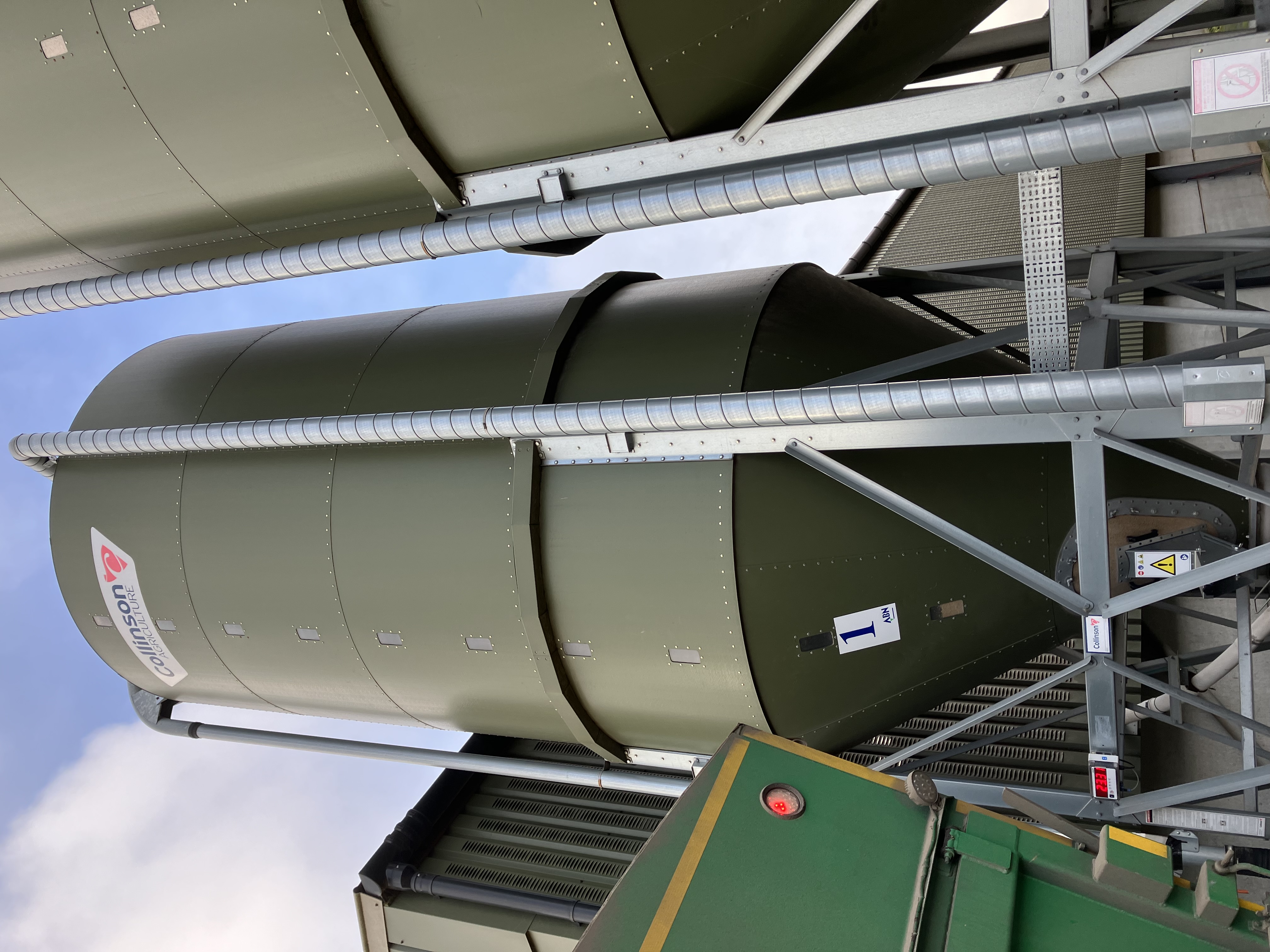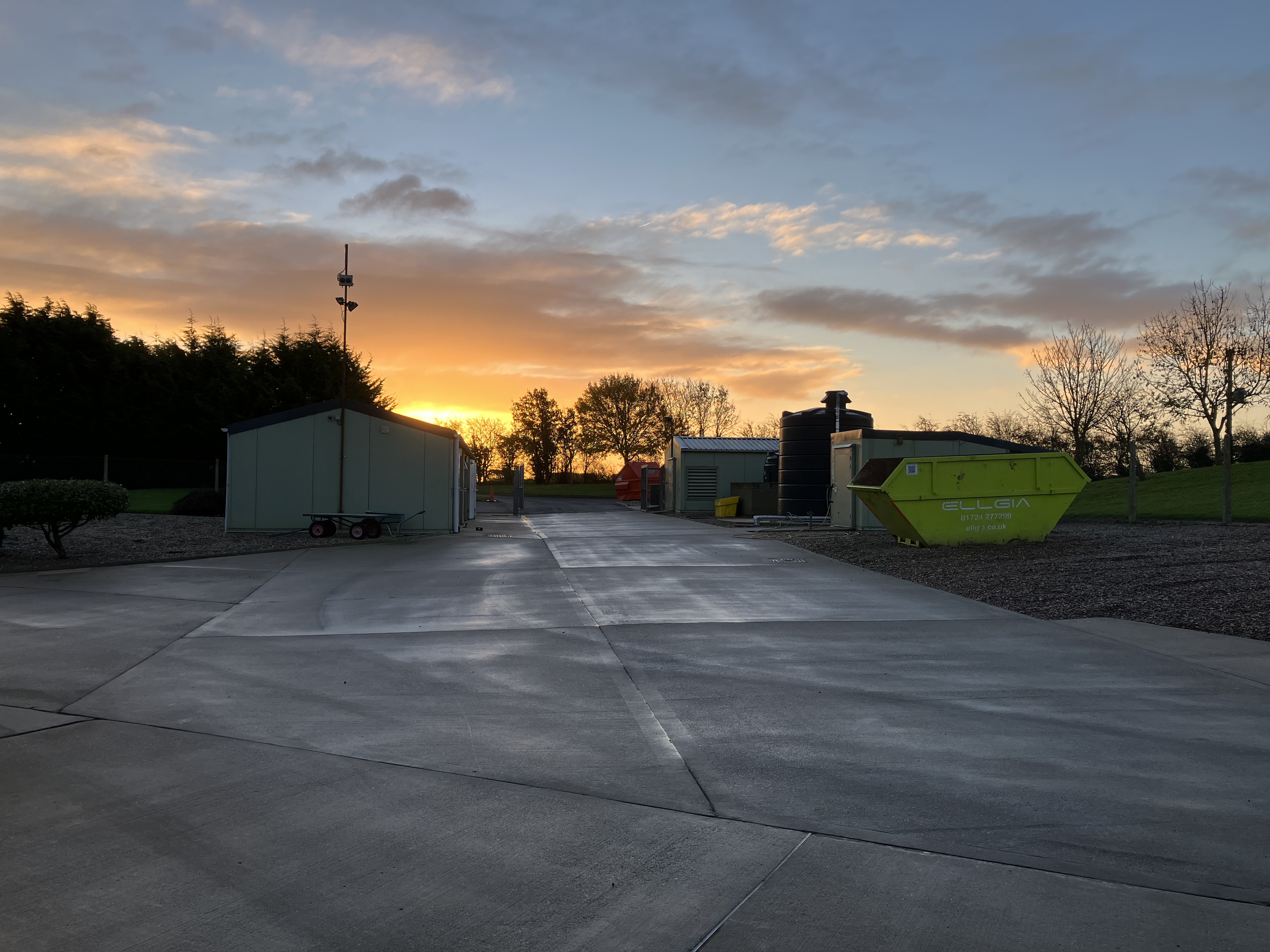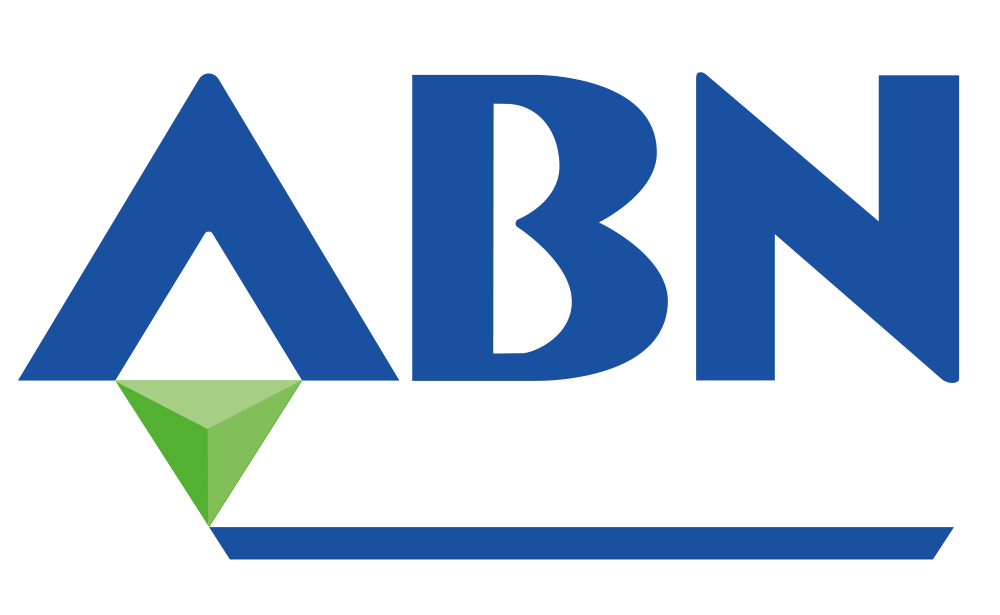 ABN’s Director of Health, Safety, Quality and Environment, Dave Roberts, explains why it has been important for him to spend time both on-site with ABN factory colleagues, as well as joining some of the fleet delivery drivers on their rounds.
ABN’s Director of Health, Safety, Quality and Environment, Dave Roberts, explains why it has been important for him to spend time both on-site with ABN factory colleagues, as well as joining some of the fleet delivery drivers on their rounds.
Alongside the commercial team, the drivers are the face of ABN, spending regular time on-site with customers up and down the country. They play an important partnership role and link to ensure health and safety targets are met from point of despatch and all the way to farm.
“It is important to see the role through their eyes, to see the challenges, as well as the positives with safety protocols. The safety of the drivers, and the farms they visit, are paramount,” he says.
First site visit
On his first day out with two different drivers, Dave initially left the Sherburn-upon-Elmet facility, heading to an incredibly well-run poultry farm, with excellent bio-security controls in place.
“This included wheel washers on entry, with all the appropriate personal protective equipment (PPE) worn on farm, and the farm manager looking after us throughout.
“It was all very clean! While we have our own PPE for both bio-security and health and safety, some customers will mandate we wear PPE that has only been used on their farm.
“We have to consider that our drivers have PPE specified not just for bio-security, but also for health and safety purposes, such as impact protection footwear, but we can wear cover shoes over these, if and when required. Likewise, we too can sanitise vehicles either with our own sanitisation spray, or as in this case, through the customer’s wheel-washing facilities.”
In the afternoon, while out delivering to a pig farm, it was a similar story, with high standards of safety, where obvious investments in the silos and a concrete yard provided easy access for the vehicle.

Early start
One of his next days out with a driver was again an early start for Dave.
“I always start when the driver starts, and on this occasion that meant being on-site at 4.30am, when it is still dark and there is nobody else around. As I say, I want to see it through the eyes of the driver, and their first load is generally in and out before any of the line managers are on-site”.
The first delivery was around 5.45am to a pig farm. Again, although this site was in good condition, during the winter months the cold, fresh and dark conditions bring the added risks of slips, trips and falls.
“On arrival the farm was busy, with a lot of activity. They weren’t lone working, so there was a lot of people on hand checking everything was okay and providing help if needed, which was good to see,” Dave shared.
“As it got lighter, we could see the silos were in really good condition with load cells, on level ground, making it easier for the driver to make the delivery safely and efficiently. The farmer was very helpful, coming out to site, and there was also really good lighting, had it been needed.
“If I had maybe gone out with the intention to look for ‘near misses’ or safety learning opportunities, in reality, I couldn’t find any, which is really positive, in terms of conditions or behaviours.”
In total Dave and the driver had three loads, returning to the mill for each new load, with quality samples taken at point of despatch, underlining the importance of feed safety and quality at all stages.

Communication
While of course, Dave’s presence meant there was an extra body on-site or in cab, often the drivers will be working alone for long periods of time, however, ABN have protocols in place should any concerns arise.
“The customer services team retains contact with the driver, and there are lone-worker devices available, with a 24-hour help desk that can provide support or assistance in the case of falls or injury when nobody else is on-site, as well as tracking locations,” he says.
“The whole process reinforces why communication is so important, and by sitting with the drivers, it allows us to understand how our safety guidance and messages are interpreted, and potentially identify any areas where our Target Zero ambitions to make sites safer, from manual handling to the control of vehicles on site, can benefit from continuous improvement and best practice.”
As Dave reflects, by and large, farms are not designed to take big articulated trailers and lorries. There are often inherent access issues, along with bio-security requirements and all of the other activities and people on-site, so even on newer and well-designed farms, the driver’s skills can and will be tested.
Target Zero
“Communication is therefore key, and the important thing is getting our people engaged with hazard awareness and hazard spotting. That means for even the most experienced driver, making sure they don’t get ‘too familiar’ with a site set-up, and appreciate that situations are constantly open to change.
“For example, a delivery at the very start of a winter morning, when it is dark and likely cold and slippery, presents a different level of risk, than perhaps there is in that last hour of that driver’s delivery run. Near-miss reporting is also crucial for safe future learning opportunities,” he adds.
With the majority of driver injuries reported at work as a result of trips and slips, or handling delivery pipes, the importance of wearing the right PPE, from high-visibility clothing, to safety shoes and gloves, is clear to see.
“There is also a skill in delivering into a silo without overfilling it, as well as hazard awareness in terms of checking the condition of the area around the farm,” Dave continued.
“While it is not our site or equipment, we can advise and influence on suggested safety improvements. Drivers sharing and flagging potential hazards can therefore be extremely valuable for the farmer. That ties in closely with our partnership approach - our drivers are very much the face of the ABN business on farm.
“Whether it is one of our team or someone else on farm, no-one wins or benefits if there is an accident,” he adds.

Risk assessments
For every delivery there will be an on-farm risk assessment done in advance, and that involves working closely with the customer service team to get the site details.
If it is the first time delivering to a particular site, a more thorough risk assessment is conducted, for example being aware of any nearby overhead power cables, or considering if deliveries will be made on uneven ground, to ensure all risks are documented and that precautions are followed.
“Once we have a risk assessment, we also have a system in place that we call ‘Take Two’, where the driver will follow a simple checklist, covering any slips, trips and hazards, and just having that double check approach to health and safety on site”.
“That is equally important even when a driver is very familiar with the set-up, as a farm is a working environment, subject to movement and change. Vehicle to vehicle, or vehicle to people segregation is important, and adjusting for different weather conditions, or different site activities is key – basically remaining diligent and vigilant”.
All of these approaches form part of ABN’s Target Zero ambition and Everyday Excellence programme, developing a safety culture that extends from the ABN sites, right to the farm gate, and everywhere along that route.
“It really is from factory to farm, covering the complete loop from inbound and outbound logistics. We will continue to drive that focus on quality, safety, health and well-being responsibilities across all areas of the business, and right down to our farm customers,” Dave concluded.
